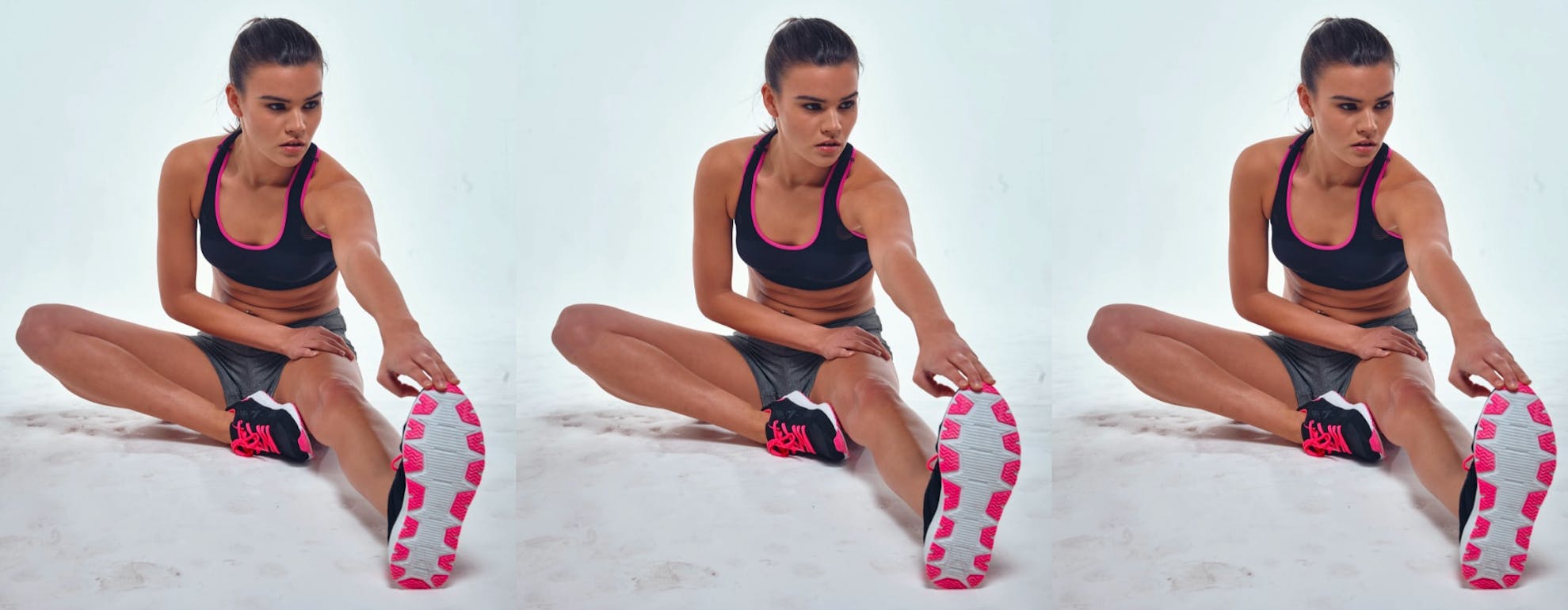
Health & Wellbeing
The most Important Stretches to Prevent Injury
All too often skipped or rushed, stretching after exercising should form an essential part of every workout. While the jury is still out on the benefits of stretching before we work out, the evidence shows that static stretching post-training can improve our flexibility and suppleness, enhance our range of motion, boost circulation and reduce muscle stiffness. With that in mind, it follows that stretching after exercise can help to reduce our risk of injury. Here are 5 key static stretches you should be doing after your workout.
ㅤ
1. HAMSTRING STRETCH
Good for: Keeping the hamstring muscles loose and reducing the risk of muscle strains and tears.
How to do It:
- Sit on the ground.
- Extend your right leg straight in front of you.
- Bending the left leg, bring the left foot in, with the heel of the left foot touching your right knee.
- Lean forwards and hold the toes of the right foot with both hands.
- If you can’t reach your toes, hold your shin instead.
- Hold for fifteen to thirty seconds.
- Repeat on the other side.
ㅤ
2. QUADRICEPS STRETCH
Good for: Relieving tension and stiffness and boosting flexibility, particularly reduces the likelihood of pain and the risk of injury to the knee and lower back.
How to do it:
- Hold onto a chair or wall for stability.
- Keep knees close together.
- With your right hand, grab your right foot.
- With a controlled movement pull your heel towards your right buttock.
- Hold for 30 seconds. Repeat on the other side.
ㅤ
3. OVERHEAD TRICEPS STRETCH
Good for: Reducing tension and stiffness, helping prevent tightening of the muscles and improved flexibility and range of motion.
How to do It:
- Standing up straight.
- Extend your left arm straight up.
- Keep the elbow raised and bend your arm behind your head.
- With the right hand, gently pull the left elbow towards the right.
- Hold for 30 seconds.
- Repeat on the other side.
ㅤ
4. SEATED CALF STRETCH
Good for: Reducing calf tightness and boosts circulation. In doing so this can reduce the likelihood of cramping and can help to prevent common injuries such as Achilles Tendonitis, Plantar Fasciitis and shin splints.
How to do It:
- Sit on the floor.
- Extend the right leg in front of you.
- Lean forwards and place the hands around the ball of the foot so the toes tilt backwards towards the body.
- If you can’t reach your toes, use a towel.
- Hold for fifteen to thirty seconds.
- Repeat on the other side.
ㅤ
5. GLUTES STRETCH
Good for: Increasing suppleness, boosting circulation and helping prevent stiffness in the glutes, often associated with lower back pain.
How to do it:
- Lie on the floor on a mat.
- Bend the right leg, keeping the right foot flat on the floor.
- Cross the left leg over the right thigh.
- Hold the back of the right thigh with both hands.
- Slowly pull both legs towards your body.
- Hold for fifteen to thirty seconds.
- Repeat on the other side.
ㅤ
TIPS FOR STRETCHING
- Never stretch cold muscles or you’re heading for an injury. Stretch when the muscles are warm and pliable after your training session.
- Repeat each exercise 3 to 5 times, holding for 15 to 30 seconds.
- You should feel tension in the stretch, but never pain. Stretch to just beyond your general range of motion.
- Keep your movements controlled and gradual.
- Don’t rush it! Stretching helps enhance recovery and in doing so boosts your performance in the long run. Always include 5 to 10 minutes of stretching after every session.
ㅤ
It’s not just stretching that’s important to avoid injury. It’s just as important to warm up and cool down properly when training as well. Take a look at this article to make sure you’re doing it correctly.
Want to learn more? Visit our Health and Wellbeing category to help look after your body, mind and personal safety with our expert advice and guidance.
Welcome
Welcome to our SportsShoes Health & Wellbeing Hub! Look after your body, mind and personal safety with our expert advice and guidance.